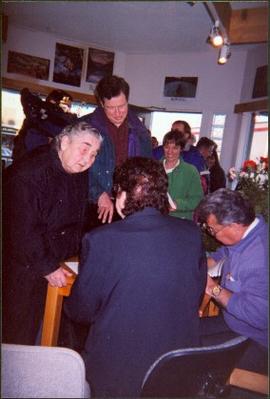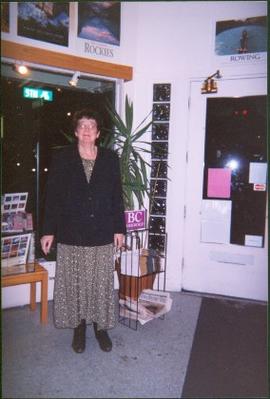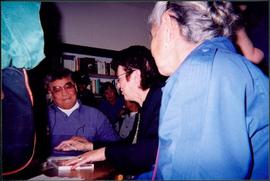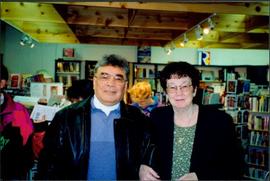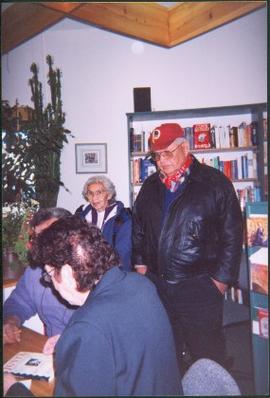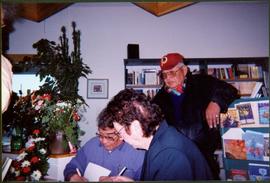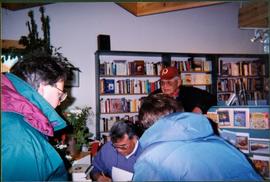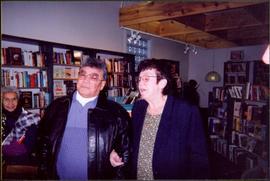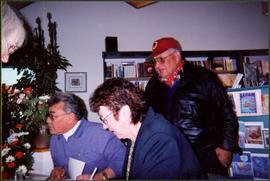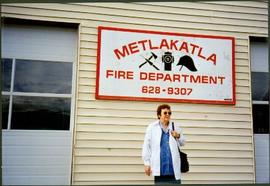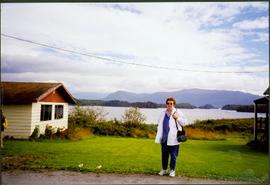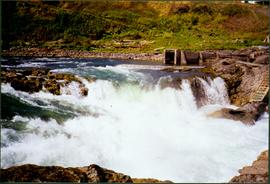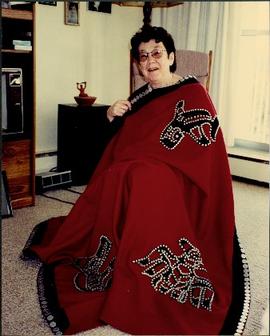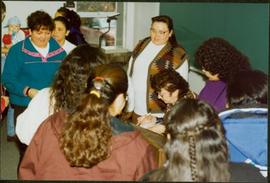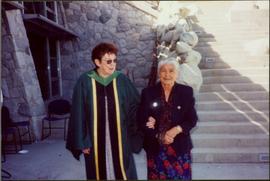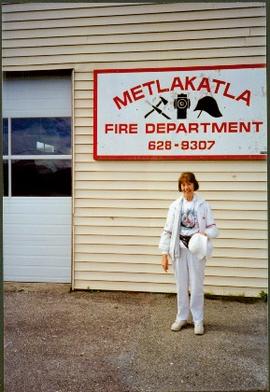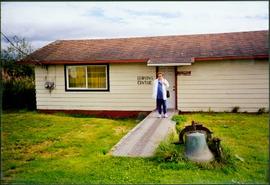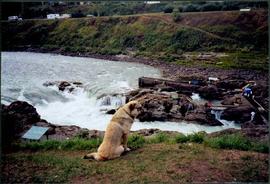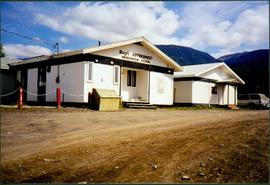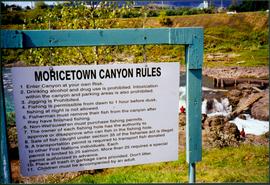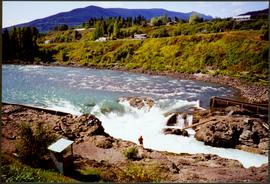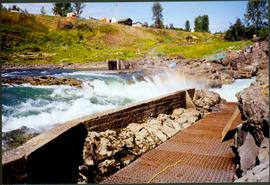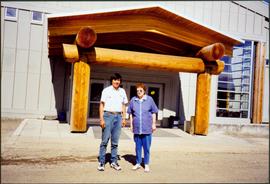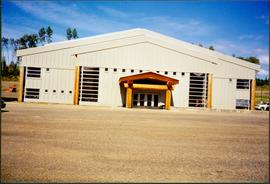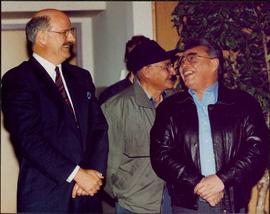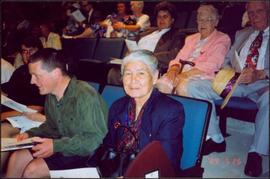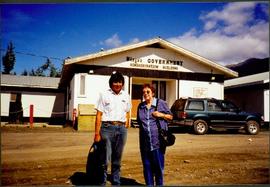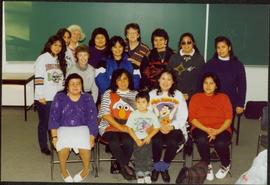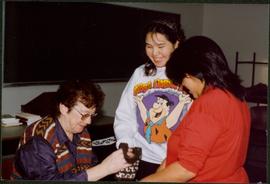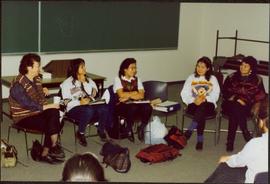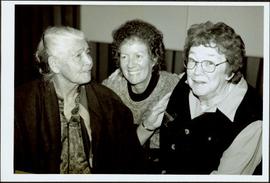Item is a recorded audio interview with Justa Monk.
Audiocassette Summary
00’10” Bridget Moran interviews Justa Monk. They discuss the ancestry of his last name and its original spelling, Monck. Moran wants to know more about Monk’s genealogy. She tells Justa his family history will be a chapter in the book.
08’ 45” Justa discusses how his ancestors move around on the land for hunting purposes. Moran wants to know more about gardens.
10’ 19” The interview returns to Justa’s family history, particularly the arranged marriage between his mother and father.
12’ 33” Moran asks about Justa’s immediate family. Justa talks about his brothers and sisters.
16’ 54” Justa talks about alcoholism with his brothers and sisters, and with other families.
20’ 10” Moran returns to asking about Justa’s brothers and sisters. Justa talks about one of his brothers being shot and killed; mentions the name of the man who killed his brother. Justa talks about his nephew getting shot by the RCMP.
27’ 54” Moran asks Justa about the relationship between him and his siblings. He talks about being the one who is reliable; has strong leadership skills, even though he is the youngest child.
30’ 50” Moran asks about Justa’s mother. She loved going to potlatches, did a lot of sewing. She was a very quiet and religious person. Justa’s father was the same, very outspoken. Justa tells Moran he is close to all of his brothers and sisters after she asks which he is closest. When Justa was 5 years old, he spent a lot of time with his father, where he learned to hunt by the age of 7.
34’ 20” Moran asks about Justa’s housing when he was growing up. He tells her his family had a large house, but there were no bedrooms, so they had different corners where they would sleep. They had a large garden outside of their home.
39’ 20” Justa talks about how isolated Portage was, so they had to grow their own food.
40’ 41” Moran asks about churches. Justa tells her there was a church and a priest came into Portage once in a while.
41’ 10” Moran asks about what Justa remembers about Christmas. He remembers getting dressed up and going to church to sing hymns.
43’ 02” Moran asks Justa which of his brothers and sisters went to school. Justa says his sisters were not punished or abused. His brothers enjoyed school. His brothers and sisters were not allowed to speak their language, and this was their only disappointment. Justa talks about his experiences at school; he quit school and tried to get a job.
50’ 24” Moran asks about when Justa moved from Portage to Tachie.
52’ 34” Moran asks about Justa trying to get a job at such a young age. He got a job with his brothers at a sawmill in Fort St. James.
55’ 33” Justa says he was born in 1943. Moran asks about when he met Theresa, his wife. They began their common-law relationship in 1966.
57’ 13” Moran asks about how long Justa was in jail. He served 9 months and was released on parole.
1:02’ 53” Justa talks about being unemployed and broke. Theresa came to visit him at camp where she stayed for 6 or 7 months. He talks about getting married later on in their relationship. Moran asks about where Theresa is from. Theresa is from Tachie but he did not know her growing up. Moran asks about Theresa’s background.
1:08’27” Justa talks about his many girlfriends, partying, and being a womanizer. Theresa and him got ‘serious’ after she had their daughter.
1:11’ 24” Moran ends the interview. She tells Justa they will change the pace for the next interview by discussing land claims. Moran asks Justa about running for chief. He lost the first time he ran.
1:14’28” Moran asks Justa about Kemano. Back in 1948, Kemano I was created. The Indian Agent came to the reserves for signatures so the Kemano project could go ahead. Justa says the people did not have time to move their things when the flooding began. People were misled with regards to what the Kemano project was about. People on the reserves were moved to Grassy Plains – they were spread out, not the same community as they were. In 1982, First Nations people began to fight back against Kemano II. Justa was a district chief.
1:24’ 48” Justa discusses the need for an environmental assessment for the Kemano project. The case to the Supreme Court and are currently waiting for the decision. The provincial government claims there is no need for environmental assessment and are planning to go forward with the project. Justa discusses the commission and the Kemano case, in general.
1:30’ 07” End of tape.
